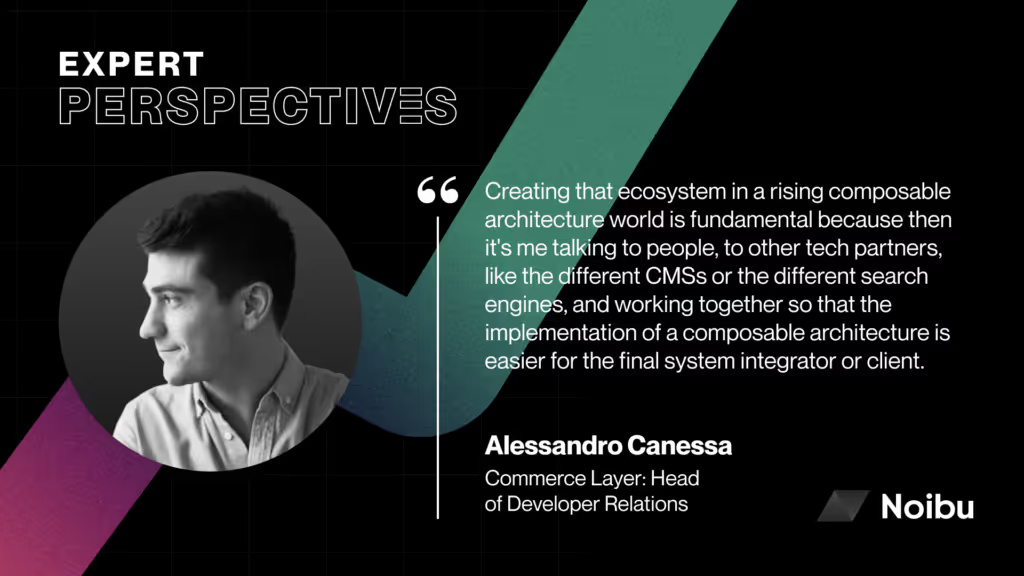The future of micro frontends and developer relations, with Alessandro Canessa of Commerce Layer:
.avif)
Ecommerce is switching to an age of composable architecture, but what are the impacts of this on the industry? In the latest episode of The Ecommerce Toolbox: Expert Perspectives, host Kailin Noivo sits down with Alessandro Canessa, Head of Developer Relations at Commerce Layer. Together, they explore the business impact of micro frontends and the importance of developer advocacy and relations roles in the move away from monolithic architecture.
What is a micro frontend?
Micro frontends originate from the microservices concept, with the application of the single responsibility principle to frontends. Thus, ‘micro’ does not refer to a small frontend, but instead reflects their existence as an independent, releasable function.

They exist to eliminate monolithic frontends, again coming from their ability to be independent and releasable. They can act as an entire user journey, or just a part of it, but the underlying concept is that they can be released automatically and independently.
At Commerce Layer, they are developed using web components, React components, and hosted application abstractions so as to reduce the time to market.
They are only possible to use when you have headless architecture which provides API-based backend support. Alessandro explains, “the headless CMS is the brain of your APIs, right? So it provides all the backend. And then the frontend will be separate.”
The business impact of headless commerce and micro frontends
Monolithic architectures, and thus frontends, can cause business issues, such as updated difficulties and team dependencies. Fortunately, these can be solved by keeping different verticals separate, like through a headless approach.
"Now, why would a business go headless? Because you can actually end up with a micro frontend. You can work on and release those verticals while you keep working on the rest of the product, and you can release independent parts of your application without having massive dependencies across the different teams.”
Of course, going headless will not automatically fix any problems; you will still need adequate, properly constructed architecture. That being said, Alessandro explains that headless architecture, and micro frontends, allow for independent development and release of application parts, which is beneficial for enterprises as it enables incremental updates without large dependencies.
The future of developer relations and advocacy
The current composable ecosystem calls for more developer-oriented documentation and API promotion, which means developer advocacy and relations roles are becoming more prominent.
Developer advocacy is essentially public relations for developers, and helps to build a developer culture. As mini accelerators and composable architecture have increased in prominence, developer advocacy and relations roles are becoming ever more necessary. Developer relations facilitates interactions between different tech solutions, enabling an easier implementation of composable architecture for system integrators and clients. In a monolithic architecture world, it was not necessary, but it is essential in the current ecosystem with multiple platforms.

Listen to the full episode below!
Listen to this episode of The Ecommerce Toolbox: Expert Perspectives with Alessandro Canessa and Kailin Noivo to learn more about the future of micro frontends and developer relations.
👉 Apple: https://apple.co/3zOknLd
👉 Spotify: https://bit.ly/3y2fcXu



.avif)
.avif)